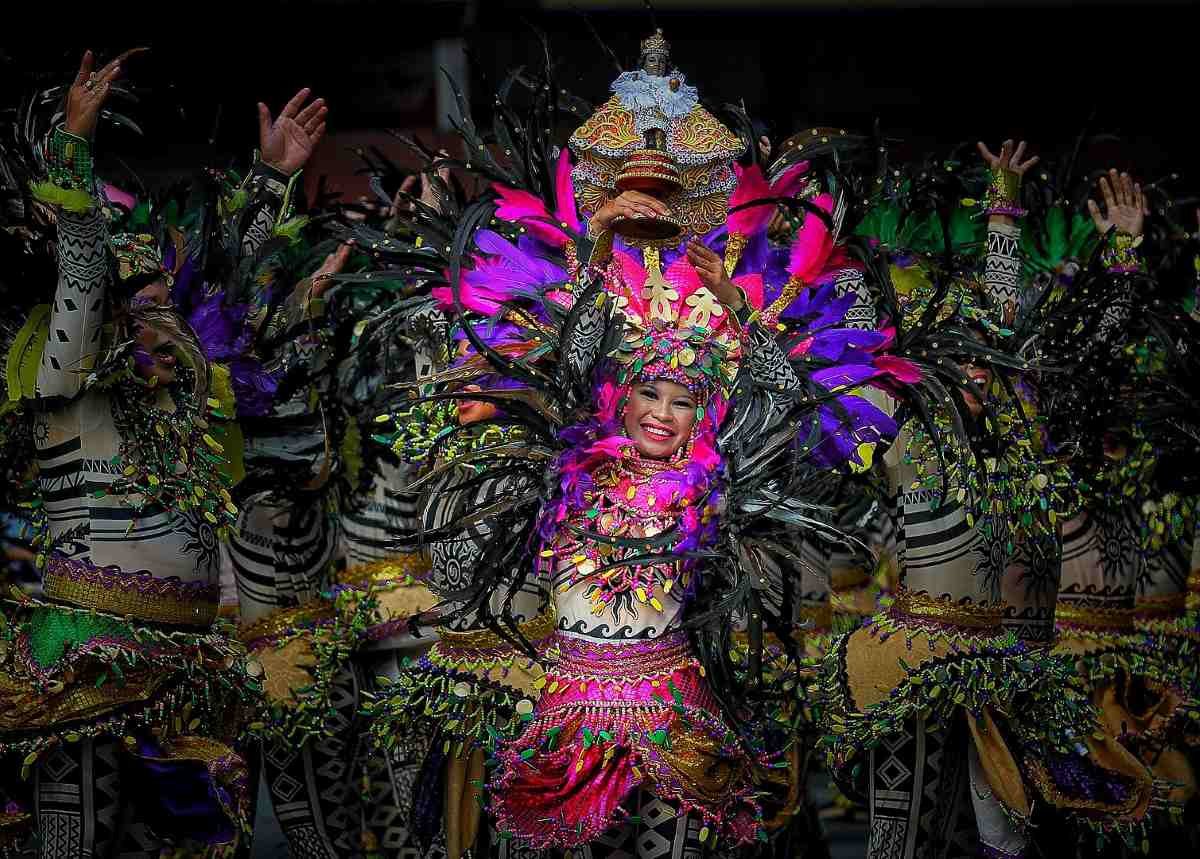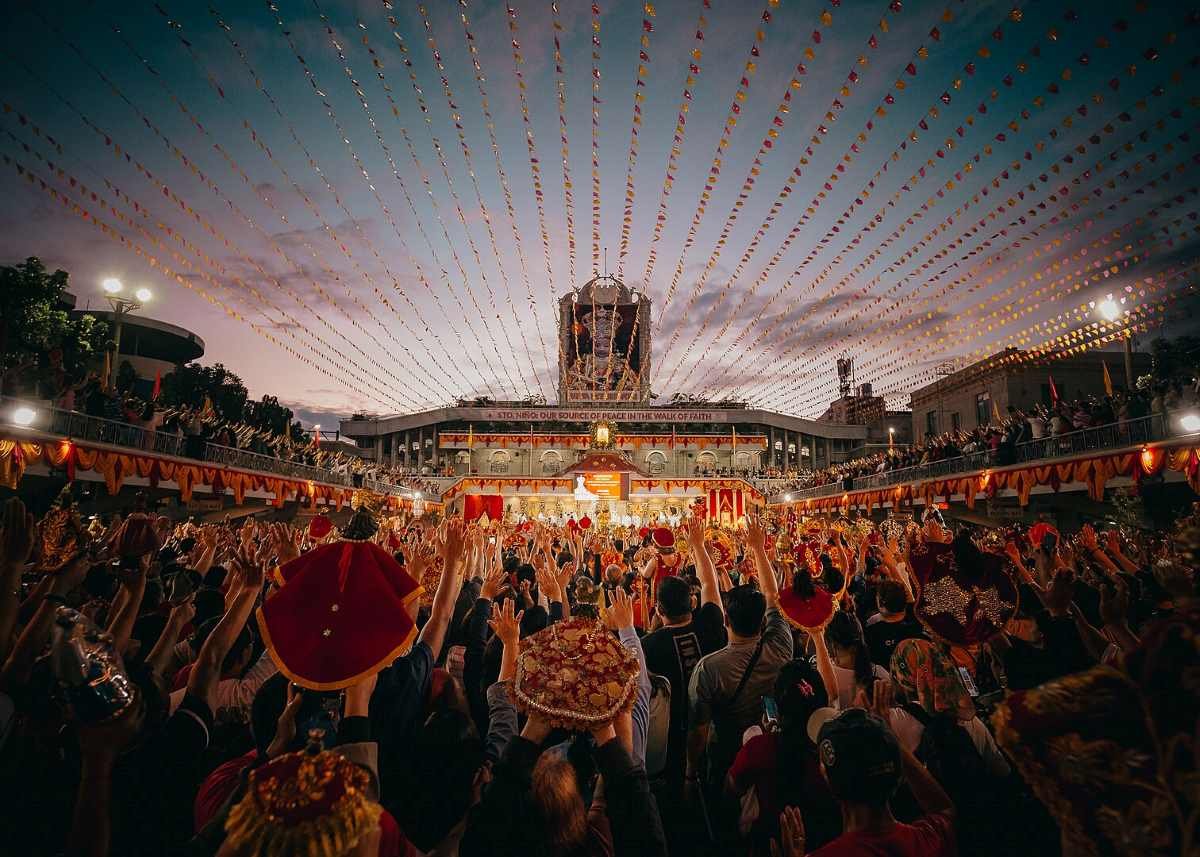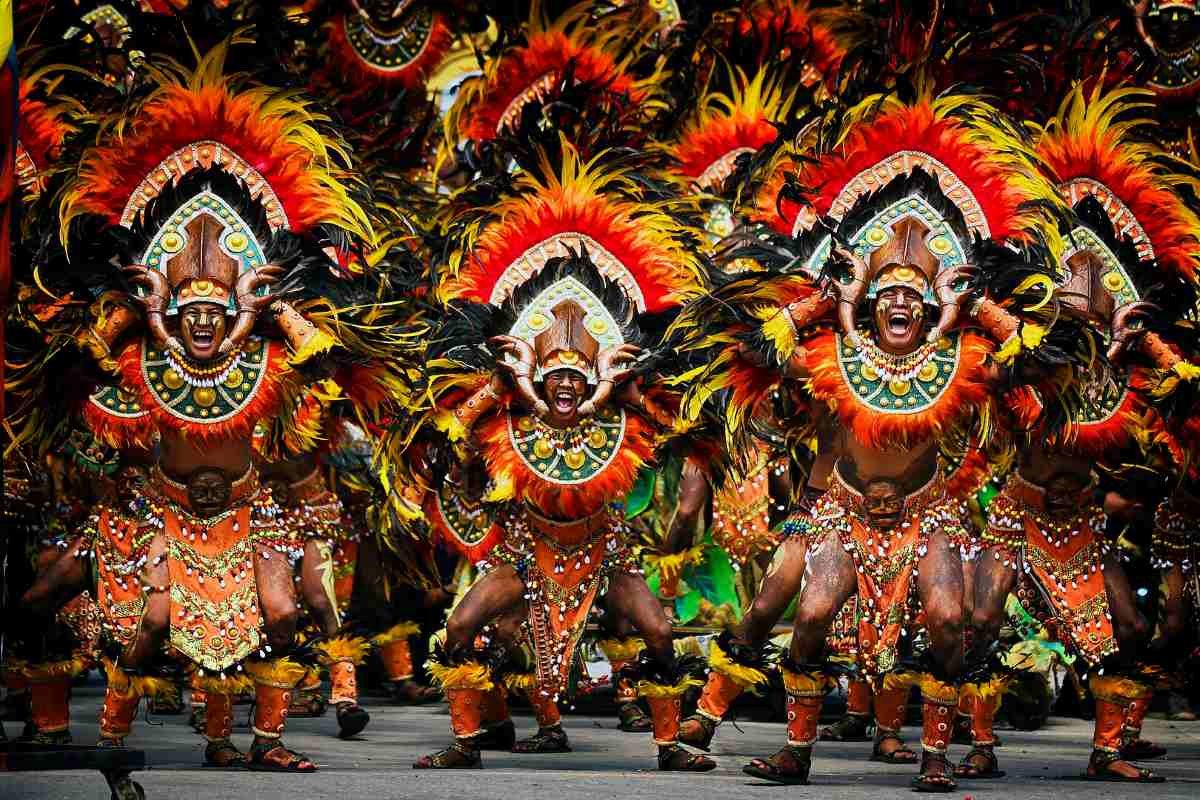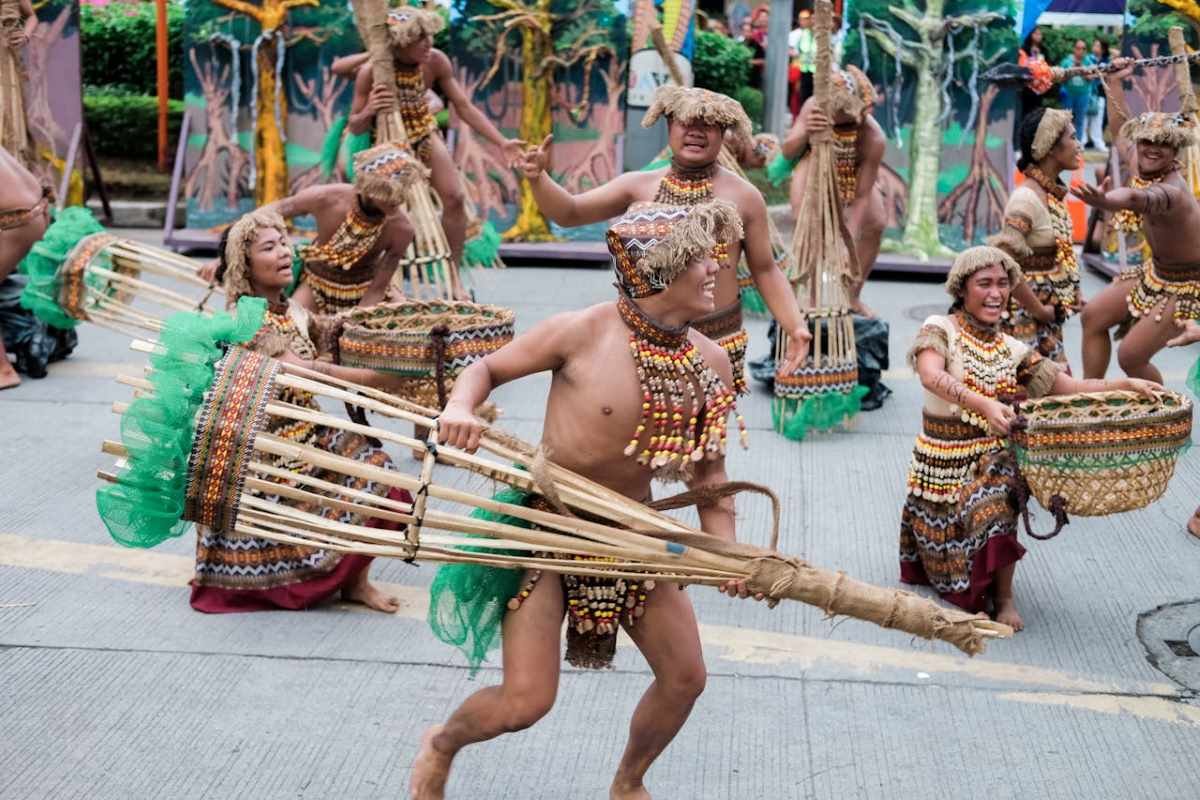Top 6 Filipino Festivals To Visit: A Colorful Celebration of Culture and Tradition
When it comes to grand celebrations, the Philippines is a treasure trove of vibrant festivals and tourist attractions. Known as fiestas, these events are deeply ingrained in Filipino culture, celebrated with colorful costumes, lively music, and captivating rituals. Whether rooted in religion, harvest, or indigenous traditions, every Filipino festival offers a unique window into the heart of its people. For tourists, these festivals are an immersive way to experience the country’s history, traditions, and the infectious joy that Filipinos are known for.
Now, let me take you on a deep dive into some of the Philippines’ most iconic festivals: Sinulog, Ati-Atihan, Pahiyas, Dinagyang, Panagbenga, and Kadayawan. You’ll find everything from must-see events, tips on accessibility, and logistics, to the unique local dishes and souvenirs to expect. Trust me, after reading this, you’ll want to pack your bags and jump into the nearest fiesta!

(1) The Sinulog Festival: Cebu’s Devotion and Dance Spectacle
When: Every 3rd Sunday of January
Where: Cebu City, Philippines
Attendees: 2-3 million people
Highlights: Grand parade, street dancing, and vibrant costumes celebrating the Sto. Niño (Child Jesus). Sinulog is one of the most famous and well-attended festivals in the Philippines, known for its colorful displays and cultural performances.
Cultural Significance and Origins: Honoring the Santo Niño
The Sinulog Festival in Cebu City is held every third Sunday of January and is one of the grandest religious Filipino festivals. It honors the Santo Niño (Child Jesus), an important symbol of Christianity in the country. Sinulog traces its origins to pre-Hispanic times, where locals worshipped wooden idols. This Filipino festival’s transformation into a Christian event began in 1521, when Portuguese explorer Ferdinand Magellan gifted a statue of the Santo Niño to Queen Juana of Cebu. The statue became a vital part of Cebuano faith, and over the centuries, Sinulog grew into a celebration of religion, blending indigenous and Catholic traditions.
Sinulog means “like water current,” referring to the traditional two-steps-forward, one-step-back dance that mimics the flow of the Cebu River. This rhythmic movement is central to the festival, symbolizing the Filipinos’ cultural and religious journey.
A Parade You Won’t Forget! Must-See Events
Sinulog’s highlights are its spectacular street parades and dance competitions, attracting over a million spectators each year.
– Grand Parade: Imagine an endless procession of brightly costumed dancers moving to the beat of drums and gongs. The streets explode with color and energy, making this parade a true feast for the senses.
– Sinulog Dance Competition: Local performers show off the traditional Sinulog dance in a fierce competition. The choreography is not only technically impressive but also steeped in symbolism.
– Fluvial Procession: Witness a river parade where a replica of the Santo Niño is carried in a decorated boat, accompanied by smaller boats and fervent prayers. It’s an event that blends the sacred and the spectacular.

Where and How to Experience Sinulog Like a Pro: Best Viewing Spots, Weather, and Accessibility
If you’re keen on seeing the parade, get your spot early along Osmeña Boulevard, the heart of this Filipino festival. For a more comfortable view, consider booking tickets for the grandstand seating, offering you a front-row seat to all the action. Cebu is quite hot in January, with temperatures reaching up to 30°C (86°F), so come prepared with light clothes, sunscreen, and water.
Cebu City is accessible by plane via Mactan-Cebu International Airport and has plenty of accommodation options—from budget hostels to five-star hotels—but make sure to book months in advance. Traffic and crowds can be overwhelming, so it’s best to stay near the city center to avoid the rush.
What’s Cooking in Cebu: Local Food, Dining, and Drinks
During Sinulog, Cebu becomes a culinary wonderland! Make sure to try lechon, a roasted pig delicacy the city is famous for. Street vendors pop up everywhere, offering affordable local favorites like puso (hanging rice), siomai, and bbq skewers. Don’t miss Cebu’s danggit (dried fish) for a salty, crunchy snack.
For drinks, buko juice (coconut water) is a refreshing option to beat the heat. You’ll also find stalls selling all kinds of local refreshments, from fruit shakes to Sago’t Gulaman (sweetened tapioca with jelly).
What to Buy and Where to Stay: Souvenirs and Accommodations
Sinulog souvenirs range from intricate Santo Niño figurines to colorful festival shirts and handcrafted accessories. You’ll find these at Carbon Market or stalls set up near the festival routes. Budget-wise, expect to spend around ₱8,000 to ₱15,000 ($150-$270) for accommodations, food, and souvenirs. For accommodations, aim to book at least 6 months in advance, especially if you plan to stay in the city center.

(2) Ati-Atihan Festival: Kalibo’s Tribal Extravaganza
When: Every 3rd Sunday of January
Where: Kalibo, Aklan Philippines
Attendees: 1-2 million people
Highlights: Known as the “Mother of all Philippine Festivals,” Ati-Atihan honors the Sto. Niño with indigenous-inspired costumes, body paint, and street dances. The whole town turns into a vibrant party.
Cultural Origins and the Spirit of Ati-Atihan: A Filipino Festival Like No Other
Ati-Atihan, dubbed as “The Mother of All Filipino Festivals,” is held in Kalibo, Aklan, every third week of January. The festival celebrates both Santo Niño and the Ati people, the indigenous group that originally inhabited Panay Island. According to legend, when Malay settlers arrived, the Atis generously welcomed them, and to honor this bond, locals dress in blackface, mimicking the Atis’ dark skin, and perform tribal dances in the streets.
Unlike other Filipino festivals, Ati-Atihan is participatory. Here, it’s not just about watching the performances—you’re encouraged to join in! The phrase “Hala Bira! Pwera Pasma!” echoes throughout the town, encouraging revelers to dance and celebrate despite exhaustion.
You Won’t Want to Miss This: Event Highlights of Ati-Atihan
– Street Dancing: Revelers parade through the streets in indigenous-inspired costumes, carrying images of the Santo Niño. This isn’t just any parade—you’re invited to join in and become part of the celebration.
– Santo Niño Procession: On the final day, an image of the Holy Child is carried through the streets, with participants offering prayers and thanks.
– Religious and Cultural Shows: Performances combine tribal rituals with Catholic traditions, reflecting the unique blend of Filipino spirituality.

The Best Festival Spots and Tips for Attending
The main action happens around Kalibo’s town plaza, where performances and religious rites take place. If you want a good spot for the procession, arrive early to secure a spot near Pastrana Park. Kalibo’s weather in January is warm, around 26-32°C (79-89°F), so pack light clothing, comfortable shoes, and don’t forget your water bottle. Kalibo can be reached via Kalibo International Airport or through nearby Caticlan if you’re coming from Boracay. Accommodations are more limited than in larger cities, so booking early is key.
What to Expect from Local Cuisine and Souvenirs you can take.
Local street vendors line the streets during Ati-Atihan, offering everything from grilled chicken inasal to pork barbecue. Aklan is also known for binakol, a chicken soup cooked with coconut water, and batchoy, a noodle soup loaded with pork, liver, and chicharron. Kalibo is famous for its handmade baskets and woven products, which make great souvenirs. You can also buy Ati-Atihan memorabilia, like tribal masks and Santo Niño statuettes. Budget about ₱6,000 to ₱10,000 ($110-$180) for your trip, depending on your accommodation choice.

(3) Pahiyas Festival: Lucban’s Harvest Festival of Colors
When: Every May 15
Where: Lucban, Quezon Philippines
Attendees: 1 million+ people
Highlights: Houses are decorated with colorful “kiping” (rice wafers) and agricultural products to give thanks for a bountiful harvest. The festival is a grand showcase of creativity and traditional Filipino hospitality.
The Heart of Pahiyas: A Thanksgiving Like No Other
Held every May 15 in Lucban, Quezon, Pahiyas Festival is a colorful harvest Filipino festival dedicated to San Isidro Labrador, the patron saint of farmers. It’s a thanksgiving for a bountiful harvest, with each household adorning their homes with kiping, brightly colored rice wafers, fruits, and vegetables, turning the entire town into a massive art gallery.
Eye-Catching Displays You’ll Never Forget
– Decorated Houses: The town’s biggest draw is the intricately decorated houses. Walking through Lucban feels like stepping into a world made of vibrant fruits and vegetables.
– Agricultural Parade: See floats made entirely of produce, accompanied by carabaos (water buffalo) decked out in traditional gear.
– Cooking Competitions: Enjoy cooking contests featuring Lucban’s signature dishes, like longganisa and pancit habhab.
Where to Go for the Best Views and Travel Tips
This Filipino festival’s highlight is the house decoration competition, and the best way to experience it is to walk through the streets of Lucban. The parade route usually starts near the town center, but you’ll want to arrive early to beat the crowds. May in Lucban can get quite hot, with temperatures ranging from 27-35°C (80-95°F), so be sure to bring an umbrella for shade and stay hydrated. Lucban is accessible via a 3-4 hour bus ride from Manila. Accommodations in town are limited, but nearby areas like Tayabas or Lucena offer more options. Book at least 3 months in advance to ensure availability during the festival period.

A Gastronomic Journey in Lucban: Local Cuisine you can enjoy
The Pahiyas Festival is a culinary celebration as much as a visual one. As you stroll through the streets, you’ll find food stalls offering pancit habhab, a local noodle dish served on banana leaves, and Lucban longganisa, a garlicky sausage that the town is famous for. Other Filipino festival staples include kiping, the colorful rice wafers that decorate homes and can be eaten fried or grilled. You’ll also want to try hardinera, a type of meatloaf unique to Lucban. Drinks range from fresh coconut juice to locally brewed lambanog, a potent Filipino coconut liquor.
What to Bring Home and What to Spend
A visit to Lucban wouldn’t be complete without buying handmade Lucban hats, woven baskets, and longganisa to take home. This Filipino festival also features many stalls selling kiping art and other colorful handicrafts. Budget around ₱5,000 to ₱8,000 ($90-$145) for food, transportation, and accommodation, though costs may go higher depending on your preference for dining and lodging. Lucban is a small town, so consider staying nearby in larger towns like Lucena for more accommodation options.

(4) Dinagyang Festival: Iloilo’s Dance and Devotion to the Santo Niño
When: Every 4th Sunday of January
Where: Iloilo City, Philippines
Attendees: 1 million+ people
Highlights: Dinagyang features warrior-like dancers in elaborate costumes performing in honor of the Sto. Niño. It is famous for its choreographed street dancing competitions and vibrant cultural displays.
The Historical and Cultural Significance of Dinagyang
Dinagyang Festival, celebrated every fourth weekend of January in Iloilo City, is both a religious and cultural Filipino festival honoring the Santo Niño and commemorating the arrival of Malay settlers in Panay. Like the Ati-Atihan Festival, Dinagyang features street dancing with participants painted in black, representing the Ati tribe, and wearing vibrant, intricate costumes.
Dinagyang, which means merrymaking, is a celebration not just of Iloilo’s faith but also its vibrant history and strong community spirit. This Filipino festival is a blend of religious devotion, competitive performance art, and a showcase of Iloilo’s rich cultural heritage.
Highlights You Must Not Miss: Dance, Color, and Excitement!
– Kasadyahan Cultural Parade: This is a highlight that features traditional performances from local tribes, showcasing Iloilo’s rich cultural tapestry.
– Santo Niño Fluvial Procession: A religious highlight where devotees carry the image of Santo Niño down the Iloilo River, creating a unique blend of piety and spectacle.
– Ati Tribe Dance Competition: The most awaited event where competing groups showcase intricate choreography, vibrant costumes, and powerful drumbeats in a fierce, stunning competition.

How to Get the Best Filipino Festival Experience
The performances and parade happen along the main streets of Iloilo City, especially around Freedom Grandstand. For a good view, it’s recommended to purchase tickets to the grandstand seating, which offers a better perspective of the performances and a more comfortable experience. The weather in Iloilo during January can be unpredictable—expect hot days around 30°C (86°F) but be prepared for occasional rain showers. Bring a hat, sunscreen, and an umbrella.
Iloilo is easily accessible by plane through Iloilo International Airport. It’s well-connected to major cities like Manila and Cebu. Accommodations in Iloilo range from budget inns to luxury hotels, but book well in advance, as the festival brings in thousands of visitors.
Iloilo’s Culinary Gems: Food, Drinks, and Dining Spots
Iloilo is famous for its rich and flavorful cuisine. During Dinagyang, street vendors serve local delicacies like batchoy, a hot noodle soup with pork innards and crunchy chicharrón, and pinasugbo, deep-fried banana slices coated in caramel. Another must-try is biscocho, a crunchy, buttery bread perfect for snacking. For drinks, refresh yourself with calamansi juice or try the local San Miguel beer while enjoying this Filipino festival buzz.
What You’ll Spend and What You’ll Buy
Look for handcrafted Ati masks, colorful Dinagyang-themed shirts, and Santo Niño statues as souvenirs. You can also bring home weaving products from Iloilo, such as blankets, mats, and baskets made by local artisans. Budget at least ₱8,000 to ₱12,000 ($150-$220) for accommodation, food, and souvenirs during Dinagyang.

(5) Panagbenga Festival: Baguio’s Blooming Marvel
When: Every February (Whole Month)
Where: Baguio City, Philippines
Attendees: 1 million+ people
Highlights: Also known as the Baguio Flower Festival, Panagbenga is celebrated with parades featuring floats adorned with flowers, street dancing, and exhibitions. The cool climate of Baguio makes this festival a major draw for tourists.
Why Panagbenga Stands Out: A Filipino Festival of Flowers and Culture
Panagbenga Festival, held every February in Baguio City, is a month-long celebration dedicated to the city’s thriving flower industry. The word Panagbenga means “season of blooming” in the local Kankanaey dialect. What makes this Filipino festival unique is its focus on flowers—its floats, costumes, and events are all inspired by the blooms that thrive in the cool climate of the country’s summer capital. The festival started in 1996 as a way to boost the city’s tourism and pay homage to its vibrant flower-growing industry.
Event Highlights: A Parade of Blooms You Can’t Miss
– Grand Float Parade: The highlight of this Filipino festival where intricately designed floats made entirely of fresh flowers cruise through the streets of Baguio, accompanied by performers in floral costumes.
– Street Dance Parade: Performers, including school children, dance along Baguio’s main streets in flower-inspired attire, bringing vibrant colors and energy to the chilly city.
– Market Encounter: A month-long market where you can buy plants, flowers, and various handicrafts from local vendors, perfect for a souvenir hunt.

Tips for a Perfect Panagbenga Experience
The Session Road area in Baguio City offers some of the best spots to watch the grand parade, but it can get crowded fast. Arrive early or book a spot in hotels overlooking the parade route. February is Baguio’s peak season, with cool weather averaging around 15-20°C (59-68°F), so pack warm clothing. Baguio can be reached via a 4-6 hour bus ride from Manila. Accommodations range from quaint inns to high-end hotels, but since Panagbenga is a major tourist draw, it’s important to secure your lodging well ahead of time.
Where to Eat in Baguio: Local Food and Dining Delights
Baguio is famous for its strawberries, so don’t miss the chance to indulge in strawberry taho (a local tofu snack topped with strawberry syrup), strawberry shortcake, or strawberry ice cream. Another must-try is sundot kulangot, a sweet delicacy made of sticky rice and coconut jam sold in tiny wooden shells. Baguio’s cool weather makes it the perfect place to enjoy warm meals like Bulalo, a beef soup with bone marrow, or Pinikpikan, a traditional Cordilleran chicken dish.
What to Expect in Panagbenga: Souvenirs and Budget
Local artisans sell woven fabrics, wood carvings, and handmade jewelry, making Baguio a great place to find unique, handcrafted souvenirs. Don’t leave without buying a jar of Baguio’s famous peanut brittle or a pack of Sagada coffee. Expect to spend around ₱6,000 to ₱10,000 ($110-$180) for accommodation, food, and festival-related expenses, depending on your choice of lodging and activities.

(6) Kadayawan Festival: Davao’s Celebration of Life and Abundance
When: Every 3rd Week of August
Where: Davao City, Philippines
Attendees: 800,000 – 1 million people
Highlights: Kadayawan is a thanksgiving festival celebrating Davao’s bountiful harvest, culture, and diverse indigenous communities. Visitors enjoy a mix of street dancing, floral floats, and local crafts.
The Cultural Origins of Kadayawan: A Filipino Festival Rooted in Tradition
Every August, Davao City comes alive with the Kadayawan Festival, a celebration of bounty and life. This Filipino festival honors the city’s 11 indigenous tribes, celebrating their cultural heritage, the harvest of fruits, and the natural beauty of Davao. The name “Kadayawan” comes from the word “madayaw,” which means good or valuable, reflecting the festival’s focus on the city’s abundance.
Kadayawan was originally a celebration by the indigenous people to give thanks for the bountiful harvest. Over time, it evolved into a grand festival showcasing Davao’s agricultural products, culture, and the harmonious coexistence of its many ethnic groups.
The Top Kadayawan Experiences: Events You Shouldn’t Miss
– Indak-Indak sa Kadalanan: This street dancing competition showcases the unique traditions of Davao’s various tribes. Performers wear colorful costumes and dance to indigenous music, bringing the city streets to life.
– Pamulak sa Kadayawan: A grand parade featuring floats decorated with fresh flowers and fruits, highlighting Davao’s rich agricultural industry.
– Hiyas ng Kadayawan: A beauty pageant that honors Davao’s indigenous tribes, with contestants showcasing traditional attire and talents in a celebration of indigenous beauty.

How to Prepare for the Festival and Best Spots!
This Filipino festival’s events take place in key locations like San Pedro Street and the Davao City Hall, where you’ll find the best vantage points for the parades and performances. August in Davao is rainy, so bring a raincoat and umbrella, but don’t let that dampen your festival spirits! Davao’s cool, tropical weather during this Filipino festival season averages around 28°C (82°F).
Davao is accessible via Francisco Bangoy International Airport, with regular flights from Manila and Cebu. For accommodation, Davao offers a wide range of options from budget hostels to luxurious hotels, but it’s always best to book ahead.
Flavors of Davao: Must-Try Local Dishes During Kadayawan
Davao is famous for its durian, the infamous fruit with a strong smell and creamy texture that locals swear by. Try durian candy, durian ice cream, or even durian coffee if you’re feeling adventurous. For heartier meals, dig into grilled tuna panga (jaw), kinilaw (raw fish marinated in vinegar), or sinuglaw, a fusion of grilled pork and kinilaw.
Festival Budget and Souvenir Shopping: How Much You’ll Need
Davao is known for its affordable crafts, such as woven bags, beadwork, and hand-carved figurines from local artisans. Be sure to bring home some Malagos chocolate or civet coffee, both of which are proudly made in Davao. For budget-conscious travelers, set aside ₱7,000 to ₱10,000 ($130-$180) for accommodations, food, and other festival-related expenses.
Preparing for Your Filipino Festival Adventure
Before attending any Filipino festival, here are a few tips to make your trip smoother:
- Book Early: Accommodations fill up fast during festival season. Make reservations 2-3 months ahead if possible.
- Pack Light but Smart: Bring light clothes, sunscreen, and water, especially for hot festivals like Pahiyas or Ati-Atihan. Don’t forget an umbrella for rainy season festivals like Kadayawan.
- Stay Hydrated and Eat Wisely: The heat and excitement can be draining, so drink lots of water and take advantage of local food stalls.
- Secure Your Belongings: With big crowds come opportunists, so keep your valuables close in a secure bag.
- Plan for Extra Time: If possible, arrive at least a day before the festival to get familiar with the area and secure the best spots for viewing.
Conclusion: Embrace the Festive Spirit
Filipino festivals are truly something you need to experience at least once in your lifetime. Each Filipino festival offers a unique cultural immersion, allowing you to understand the deep connection between the people, their faith, and the land. These Filipino festivals are not just events—they’re immersive experiences that allow you to feel the vibrant spirit of the Philippines. Whether you’re dancing in the streets of Iloilo, feasting in Lucban, or marveling at flower-covered floats in Baguio, these celebrations offer a glimpse into the rich culture and traditions that make the Philippines one of Asia’s most colorful destinations.
So what are you waiting for? Plan your trip and dive into the vibrant world of Filipino festivals—trust me, it’ll be an unforgettable adventure!

